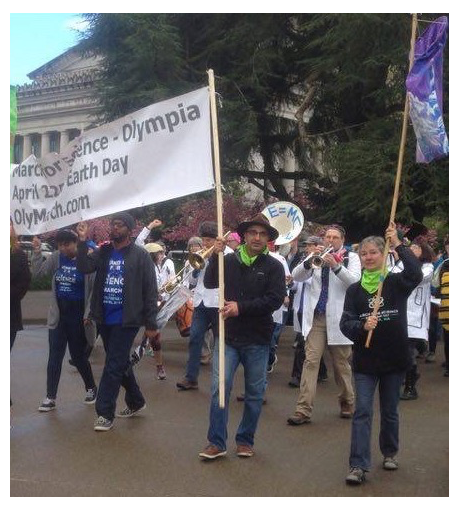March for Science
On Earth Day 2017 I marched for science together with more than 100,000 people in the US and around the world.
 It was refreshing to see so many people holding signs declaring their support for science and evidence-based decisionmaking. But what now? Most rational people, once they stop to think about it, do support reason and even the most extreme politicians try to justify their views and actions within a logical framework. Yet that framework is often not based on data and evidence, but instead on beliefs and personal experience.
It was refreshing to see so many people holding signs declaring their support for science and evidence-based decisionmaking. But what now? Most rational people, once they stop to think about it, do support reason and even the most extreme politicians try to justify their views and actions within a logical framework. Yet that framework is often not based on data and evidence, but instead on beliefs and personal experience.
It is often said that large organizations are like aircraft carriers, requiring lots of foresight to pilot; even moving slowly, these ship with tens of thousands of tons of deadweight, are hard to turn in a hurry. Yet, the course of such a ship sometimes has a tolerance of only a few feet. At these times everything has to be planned well in advance: the engines have to work just hard enough and the wheel has be be turned at just right time and by just the right amount to avoid a collision.
The other day Joe, a Navy veteran who served on the world’s first nuclear-powered aircraft carrier, the USS Enterprise, was recalling how one time when they were coming into NAS Alameda in the San Francisco Bay, he happened to be on the foredeck of the ship. As they neared the Golden Gate bridge, at a fairly high speed, he was horrified to realize that the mast was too tall to pass under it. But just as the great ship reached the bridge, it turned sharply to one side, causing it to tilt just enough for the mast to pass unscathed, with a few inches to spare. With relief he realized that this precise maneuver must have been planned well in advance.
It is true that governmental organizations or large corporations resemble large ships in the amount of momentum they have and how hard it is to steer them, but these are like ships that have defective rudders, or where the steering wheels are missing. Or perhaps stretching the analogy a bit, ones with hundreds of steering wheels and multiple engines.
While a ship’s movements depends on the laws of physics and a small set of external factors like wind and current, the state of a complex organization is much harder to predict or control. Like other complex systems (and here I use the term in its mathematical sense), these organizations often move in unpredictable direction when we try to steer them. It is as if they have multiple steering wheels all connected to each other and to the rudders in complicated ways. Turning one wheel one way may turn many other wheels, which in turn will impact other wheels, the first wheel, and the rudder. And unless we find some way of aligning their movements, we have very little chance of steering the course that we may want to.
This is where measurement, analytics, and predictive modeling can help. These tools not only allow us to measure the various hard to quantify goals and relationships between them, but could help us steer the right course by helping us align the incentives and goals at each level of the organization with the overall stated goals.
Like in science, measurement is at the heart of this process. Informed goal setting and decision making are only possible with repeated and careful measurement and an understanding of the relevant factors, and their relationships to each other.
Whether it is a large ship or a large organization, it is neither wise to leave decisions and planning to the last minute, nor responsible to rely on simplistic linear thinking. In such cases, it is best to call on sophisticated nonlinear models that best fit the shape of the complex problem we are dealing with.
